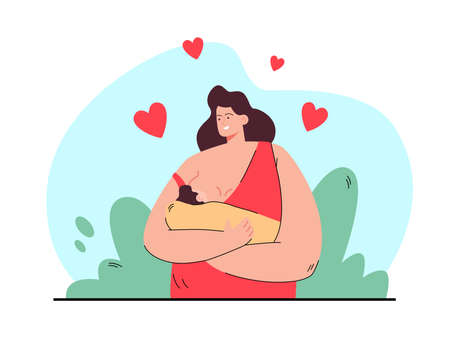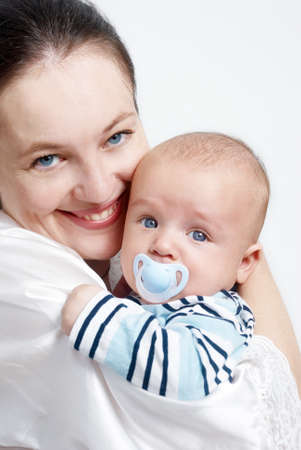Newborn Jaundice
Newborn jaundice is a common condition that causes a babys skin and eyes to appear yellow. It happens when there is too much bilirubin in the babys blood. Bilirubin is a yellow pigment produced when red blood cells break down. While mild jaundice is usually harmless, its important to monitor your baby and know when to seek medical attention.
Causes of Newborn Jaundice
Jaundice in newborns can occur for several reasons, including:
- Immature Liver: A newborns liver may not be fully developed, making it harder to process bilirubin efficiently.
- Breastfeeding Jaundice: Sometimes, babies who are not getting enough breast milk can develop jaundice due to dehydration or low calorie intake.
- Blood Type Differences: If the babys blood type is different from the mothers, the baby’s body may break down red blood cells more quickly, leading to higher bilirubin levels.
- Bruising at Birth: Babies who experience bruising during delivery may have higher bilirubin levels as their body breaks down extra red blood cells.
How to Monitor Bilirubin Levels
Your doctor will likely check your baby for jaundice before you leave the hospital. However, its important to continue monitoring at home. Here are some ways to check for jaundice:
- Skin Color: Press lightly on your babys forehead or nose; if the skin looks yellow when you release pressure, jaundice may be present.
- The Whites of the Eyes: If your babys eyes look yellowish, this could be a sign of jaundice.
- Poor Feeding or Sleepiness: If your baby seems overly sleepy or is having trouble feeding, bilirubin levels may be high.
When to Seek Medical Attention
Mild jaundice often resolves on its own within two weeks, but in some cases, medical treatment is necessary. Contact your pediatrician if you notice any of these signs:
| Signs of Concern | What to Do |
|---|---|
| Your babys skin turns more yellow instead of improving | Call your pediatrician for an evaluation |
| Your baby has trouble waking up or seems excessively sleepy | This could indicate high bilirubin levels; seek immediate medical advice |
| Your baby refuses to eat or has difficulty sucking | Poor feeding can worsen jaundice; consult your doctor |
| Your baby’s jaundice spreads to legs and arms | This could mean dangerously high bilirubin levels; get urgent care |
| Your baby has dark-colored urine or pale stools | This may indicate liver issues; see a doctor promptly |
Treatment Options for Jaundice
If your babys bilirubin levels are too high, doctors may recommend one or more treatments:
- Bilirubin Lights (Phototherapy): Your baby may be placed under special blue lights that help break down bilirubin in the skin.
- Frequent Feedings: Ensuring that your baby eats every 2-3 hours can help flush out excess bilirubin through urine and stool.
- Bili Blanket: A portable light therapy device that wraps around the baby’s body and helps lower bilirubin levels.
- In Severe Cases – Blood Exchange Transfusion: This is rarely needed but may be used if bilirubin levels become dangerously high.
Caring for Your Baby at Home
If your doctor determines that your babys jaundice is mild and does not require hospitalization, here are some things you can do at home:
- Nurse Frequently: Breastfeed every 2-3 hours to help your baby pass bilirubin through bowel movements.
- Sit Near Sunlight: Exposing your baby to indirect sunlight (such as near a bright window) for short periods can help reduce jaundice naturally.
- Keeps Track of Symptoms: Monitor changes in skin color and feeding habits daily and follow up with your pediatrician as advised.
Mild newborn jaundice is usually nothing to worry about, but keeping an eye on symptoms and seeking medical advice when needed ensures that your little one stays healthy and safe.
Colic and Excessive Crying
Its normal for newborns to cry, but when a baby cries excessively for no apparent reason, it may be due to colic. Colic is defined as frequent, prolonged crying in an otherwise healthy baby, typically occurring in the late afternoon or evening.
Signs of Colic
If your baby has colic, you might notice the following signs:
- Crying for more than three hours a day, at least three days a week, for more than three weeks
- Clenching fists or curling up legs while crying
- A red or flushed face during episodes
- Difficulty sleeping despite being tired
- Arching their back when crying
Potential Causes of Colic
The exact cause of colic isnt clear, but several factors may contribute to it:
| Possible Cause | Description |
|---|---|
| Digestive Issues | Some babies have immature digestive systems that struggle with processing food. |
| Gas or Acid Reflux | Buildup of gas or reflux may cause discomfort leading to excessive crying. |
| Overstimulation | A newborn’s nervous system is still developing and can become overwhelmed easily. |
| Food Sensitivities | Some babies may react to certain foods in breast milk or formula. |
| Emotional Sensitivity | Some infants may be more sensitive to changes in their environment. |
How to Soothe a Baby with Colic
If your baby is struggling with colic, try different soothing techniques to see what works best:
Holding and Movement
- Hold your baby close and rock them gently.
- Try wearing your baby in a carrier to provide comfort through body warmth and movement.
- Use a baby swing or take them for a car ride to create a calming motion.
Creating a Calm Environment
- Swaddle your baby snugly in a blanket to help them feel secure.
- Use white noise machines or soft music to mimic womb sounds.
- Dim the lights and reduce loud noises to avoid overstimulation.
Tummy Relief Techniques
- Give your baby gentle tummy massages in circular motions.
- Lay them on their stomach across your lap and pat their back softly.
- Bicycle their legs to help release trapped gas.
Feeding Adjustments
- If breastfeeding, track foods that might trigger discomfort and adjust your diet if needed.
- If using formula, consult your pediatrician about trying a different type for sensitive stomachs.
- Bottle-feed in an upright position to minimize air intake and burp frequently during feeds.
When to Call the Doctor
If your baby’s crying is accompanied by fever, vomiting, diarrhea, or difficulty gaining weight, consult your pediatrician. While colic usually resolves on its own around 3-4 months of age, persistent symptoms should be evaluated by a doctor.
Every baby is different, so finding the right soothing techniques may take time. Stay patient and remember that colic is temporary—it will get better!

3. Newborn Fevers and When to Worry
Fevers in newborns can be concerning for parents, especially when youre unsure what qualifies as a fever or when to call the pediatrician. Understanding the signs and knowing how to respond can help keep your baby safe and comfortable.
What Counts as a Fever in Newborns?
A newborn is considered to have a fever if their rectal temperature is 100.4°F (38°C) or higher. Since newborns have developing immune systems, even a slight fever can indicate an infection that needs medical attention.
| Temperature Reading | Action to Take |
|---|---|
| Below 97°F (36.1°C) | Call your pediatrician; low body temperature can also indicate illness. |
| 97°F – 99.9°F (36.1°C – 37.7°C) | Normal range, monitor for other symptoms. |
| 100.4°F (38°C) or higher | Contact your pediatrician immediately. |
When to Call a Pediatrician
If your baby has a fever of 100.4°F (38°C) or higher, call your pediatrician right away. Also, seek medical advice if your newborn:
- Is under three months old with any fever.
- Has difficulty feeding or seems overly sleepy.
- Shows signs of dehydration (fewer wet diapers, dry mouth).
- Cries excessively or appears unusually fussy.
- Bluish skin tone, trouble breathing, or seizures occur.
Tips for Keeping Your Baby Comfortable
Dressing Your Baby Properly
Avoid overdressing—dress your baby in lightweight clothing and use a light blanket if needed.
Keeps Hydration in Check
If breastfeeding or formula-feeding, continue regular feedings to prevent dehydration.
Create a Comfortable Environment
Keep the room temperature at a comfortable level (around 68-72°F or 20-22°C) and avoid overheating.
Avoid Giving Medication Without Guidance
Never give fever-reducing medication like acetaminophen or ibuprofen without consulting your doctor first.
4. Diaper Rash and Skin Irritations
Diaper rash is a common issue that many newborns experience. It can cause discomfort for your baby, but with the right care, it can be managed and prevented. Understanding the causes, prevention methods, and treatments will help keep your babys skin healthy and irritation-free.
Common Causes of Diaper Rash
Diaper rash occurs when the sensitive skin in the diaper area becomes irritated. Here are some common causes:
| Cause | Description |
|---|---|
| Prolonged Wetness | Leaving a wet or soiled diaper on for too long can cause irritation. |
| Sensitive Skin | Some babies have more delicate skin that reacts easily to friction or moisture. |
| Friction | Tight diapers or frequent rubbing can lead to chafing and irritation. |
| New Products | Certain wipes, soaps, or detergents may contain chemicals that irritate the skin. |
| Yeast or Bacterial Infections | A persistent rash may be due to an infection, requiring medical attention. |
How to Prevent Diaper Rash
The best way to deal with diaper rash is to prevent it before it starts. Here are some tips to help keep your babys skin protected:
- Change Diapers Frequently: Keep your baby’s skin dry by changing diapers as soon as they become wet or soiled.
- Use Gentle Wipes: Opt for fragrance-free and alcohol-free wipes to minimize irritation.
- Let Skin Air Dry: Give your baby’s bottom some diaper-free time each day to allow the skin to breathe.
- Avoid Tight Diapers: Make sure diapers fit well but aren’t too snug to prevent friction and chafing.
- Apply a Barrier Cream: Use a diaper cream containing zinc oxide or petroleum jelly to create a protective layer against moisture.
The Best Treatments for Diaper Rash
If your baby develops a diaper rash, there are several ways to soothe their skin and promote healing:
- Creams and Ointments: Apply a thick layer of diaper rash cream with zinc oxide after each diaper change.
- Mild Soap and Warm Water: Clean the diaper area gently with warm water and mild soap instead of using wipes if the rash is severe.
- Avoid Irritating Products: Stop using any new wipes, lotions, or detergents that may be causing irritation.
- Baking Soda Baths: A warm bath with a small amount of baking soda can help reduce inflammation and soothe the skin.
- If Rash Persists: If the rash doesn’t improve within a few days or worsens, consult your pediatrician to rule out infections like yeast or bacteria.
Your baby’s skin is delicate, but with proper care and attention, you can prevent and treat diaper rashes effectively. By keeping their diaper area clean, dry, and well-moisturized, you’ll help ensure their comfort and overall skin health.
5. Blocked Tear Ducts and Eye Discharge
Newborns often experience eye discharge due to blocked tear ducts. This is a common condition that usually resolves on its own, but understanding how to care for your babys eyes can help prevent discomfort and infection.
Why Do Newborns Have Eye Discharge?
A babys tear ducts may not be fully developed at birth, leading to a blockage that prevents tears from draining properly. This can cause a buildup of fluid, resulting in a sticky or watery discharge around the eyes.
How to Gently Care for Your Baby’s Eyes
Keeping your baby’s eyes clean and free from excessive discharge is important. Follow these simple steps:
- Use a warm washcloth: Dampen a soft, clean cloth with warm water and gently wipe away any discharge.
- Massage the tear duct: Lightly massage the area between the inner corner of your baby’s eye and the nose using a clean finger to help open the duct.
- Avoid irritants: Keep your baby’s face clean and avoid exposing them to smoke, dust, or other potential irritants.
When Should You See a Doctor?
Most cases of blocked tear ducts improve within the first few months of life. However, you should contact your pediatrician if you notice any of the following signs:
| Signs to Watch For | What It Could Mean |
|---|---|
| Yellow or green pus-like discharge | Possible eye infection |
| Redness or swelling around the eye | Signs of irritation or infection |
| Tear duct remains blocked after 12 months | A doctor may recommend further evaluation |
If an infection develops, your pediatrician may prescribe antibiotic eye drops. In rare cases where the tear duct remains blocked for an extended period, a minor procedure may be needed to open it.
Caring for Your Baby’s Eyes with Confidence
Blocked tear ducts are usually harmless and improve naturally as your baby grows. By keeping their eyes clean and monitoring for any unusual symptoms, you can ensure their comfort and health.


